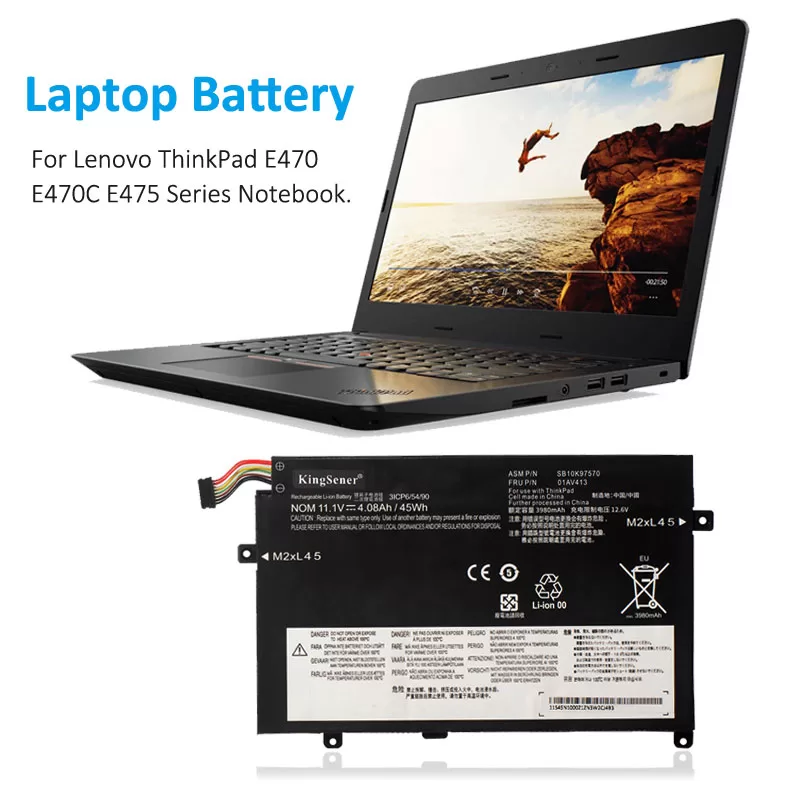The laptop battery is an important component that allows us to use the laptop without an external power source. However, over time, the battery capacity and performance will gradually decline, resulting in shorter battery life and even dangerous situations such as bulging and leakage.
Pay attention to the health of the battery and replace it with a regular battery in time. This will avoid battery life problems caused by excessive battery loss and ensure the best experience.
How long can the battery last?
Lithium batteries have a limited number of charging cycles. The number of cycles of lithium batteries built into laptops is mostly between 300 and 1,000 times. The more frequently they are charged, the shorter their lifespan. When a laptop is connected to a power adapter, its built-in lithium battery will undergo a charging cycle, but this does not mean that a charge is consumed. For example, the laptop consumes 50% of its power when it is unplugged on the first day, and then fully charged when it is plugged in. The same thing happens on the second day, so it will be accumulated and counted as one charging cycle, not two.
In other words, only when the battery reaches a full charge cycle will the battery cycle count be +1. In this way, it may take several days to complete a cycle. When the lithium battery reaches the upper limit of the cycle count, its power will be greatly reduced. Even if the laptop is not operating, it may automatically shut down within half an hour. Some batteries may even “die” directly, that is, they cannot be charged at all.
Lithium batteries are consumables, and the number of charging cycles within the 3-5 year product life cycle meets the normal use requirements. More importantly, it is necessary to avoid over-discharging, over-charging, and use in extreme environments.
How to “extend” battery life?
There are some simple ways we can extend the life of our batteries:
1. Avoid charging the battery after it is fully discharged, as this will harm the lithium battery.
2. When using the computer, try to charge it between 20% and 80% of the remaining power.
3. Pay attention to the temperature of the computer environment. Overheating or overcooling is not good for battery health.
4. For laptops that are not used for a long time, it is recommended to maintain the battery power at around 50% and place it in a cool and dry place.
How to determine whether the battery needs to be replaced?
First, we need to determine whether our laptop battery needs to be replaced. Generally speaking, if the following situations occur, it means that the battery has been seriously damaged or has safety hazards and needs to be replaced:
1. The battery life is significantly shortened and cannot meet normal usage needs .
2. The battery charge and discharge speed is abnormal, and the remaining power or full charge status cannot be displayed normally .
3. The battery appearance is deformed, bulging, leaking, heating, etc.
4. The battery cannot be charged or discharged normally or cannot be recognized.
We can check the status of our laptop battery by the following methods:
1. Use the system’s built-in tools or third-party software to view battery health, cycle count, design capacity, actual capacity and other information .
2. Use the CMD command (powercfg -energy) to generate a power diagnostic report and view the battery section .
3. Use the task manager to view battery usage, such as charging and discharging speed, remaining time, etc.
4. Observe the appearance and temperature of the battery to see if there is any abnormality .
If you find that your laptop battery has the above problems, you should replace it in time.
Choosing the right new battery
We need to choose a suitable new battery to replace the old one . It should be noted that the specifications of lithium batteries built into laptops of different brands and models are not uniform. In addition to the battery capacity (unit: Wh), the shape, thickness and operating voltage/current of the battery also vary. Considering that the quality of lithium batteries will directly determine its cycle life and safety, there are several key points to pay special attention to when choosing a new battery:
1. The first thing is the model and specifications of the battery, which must be perfectly matched with your laptop. You can find this information on old batteries or in the manual, or search online or ask customer service. Generally speaking, voltage, capacity, interface and shape are important components of the model and specifications.
2. The second is the brand and quality of the battery. It is very important to choose a brand with good reputation and guaranteed quality. You can check the reviews and feedback of other users, or buy it on a regular platform or store.
3. Finally, the price and warranty of the battery should be considered. You should make a reasonable choice based on your own financial strength and needs. You can compare the prices and warranty conditions of different channels and stores, and you can also save money through coupons or activities.
In general, rechargeable batteries are consumable parts, and their life span will be shortened over time . Eventually, we still need to replace the battery, but compared with other parts of the notebook, such loss is the most economical daily maintenance method, and it is also the problem that everyone is most likely to ignore.
If you want to know more about the battery,please visit https://www.batterymall.com/ or https://www.kingsener.com/ .

